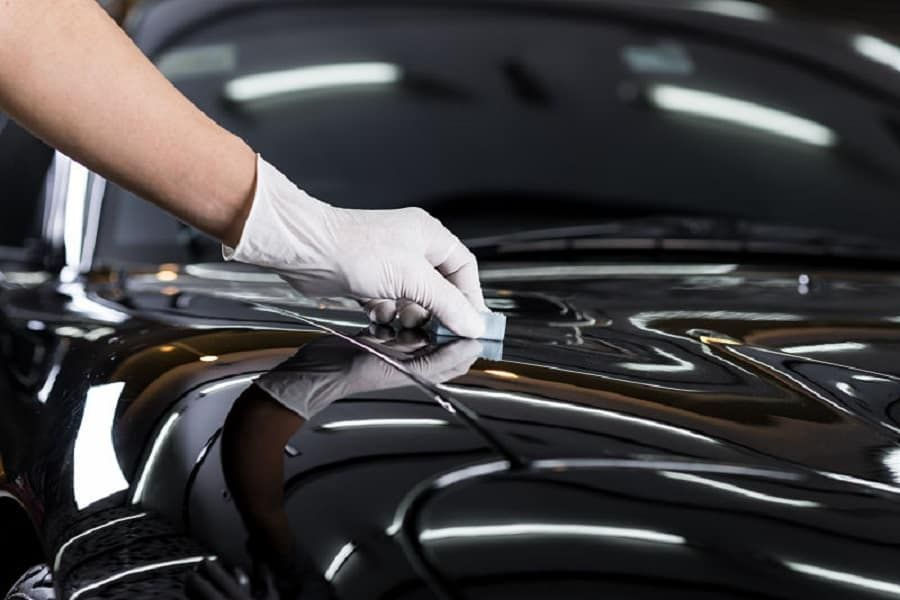How Self-Healing Car Coatings Work: The Future of Scratch Resistance
- KeePer LABO
- Mar 12
- 4 min read
Every car owner dreads the moment they spot a scratch on their vehicle. Whether it’s from a stray shopping cart, gravel on the road, or an accidental brush against a branch, scratches can be frustrating. That’s where car coating technology has made huge strides, especially with the introduction of self-healing coatings. These innovative solutions help vehicles maintain a flawless finish by repairing minor scratches and swirl marks on their own.
But how do they work? And are they the future of scratch resistance?

What Is a Self-Healing Car Coating?
A self-healing car coating is a special protective layer applied to a vehicle’s surface to reduce the visibility of minor scratches. Unlike traditional waxes and sealants, which only provide a temporary shine, self-healing coatings use advanced materials that can repair themselves when exposed to heat or friction. This means that small scratches and swirl marks can disappear without the need for polishing or repainting.
These coatings are often used in high-end paint protection films (PPF) and ceramic coatings, making them a preferred choice for car enthusiasts and luxury vehicle owners.
How Does It Work?
Self-healing coatings rely on unique chemical properties that allow them to repair damage under specific conditions. Here’s how the process works:
1. Heat Activation
Most self-healing coatings respond to heat. When a scratch occurs, the material in the coating remains slightly flexible. When heat is applied—whether from the sun, a heat gun, or even warm water—the coating softens, and the damaged area slowly returns to its original state. This is similar to how wax melts and reshapes when heated, but in a more advanced and permanent way.
2. Microencapsulation Technology
Some coatings use microcapsules filled with a liquid polymer. When the surface is scratched, these microcapsules break open and release the liquid, which fills the scratch and solidifies, effectively “healing” the damage. This technology is still evolving but is already showing promise in protecting vehicles from minor abrasions.
3. Elastic Polymers
Another method involves elastic polymers that naturally return to their original shape after being disturbed. This means that even if the coating is slightly deformed by a scratch, it can gradually reshape itself over time without external intervention.
Are Self-Healing Coatings Permanent?
While these coatings offer excellent protection, they are not completely invincible. They are best at repairing minor surface-level scratches, such as those caused by car washes or light debris. Deep scratches that penetrate through the coating and into the car’s paint will still require professional repair. However, when properly maintained, self-healing coatings can last for years and significantly reduce visible wear and tear.
Benefits of Self-Healing Car Coatings
1. Long-Lasting Protection
Unlike traditional wax or sealants that wear off after a few months, self-healing coatings can last for several years. They provide a strong barrier against UV rays, dirt, and road debris.
2. Low Maintenance
Car owners no longer need to worry about minor scratches and swirl marks. The coating continuously repairs itself, keeping the vehicle looking fresh with minimal effort.
3. Enhanced Resale Value
A well-maintained car with fewer scratches and imperfections will have a higher resale value. Self-healing coatings help preserve the paint, ensuring the car looks newer for longer.
4. Water and Dirt Repellency
Many self-healing coatings also have hydrophobic properties, meaning they repel water and dirt. This makes washing the car easier and prevents water spots from forming.
5. Resistance to Chemical Damage
Road salt, bird droppings, and harsh chemicals can damage a car’s paint over time. A self-healing coating acts as a shield, preventing these elements from causing long-term harm.
Is It Worth the Investment?
Self-healing coatings are generally more expensive than standard ceramic coatings or wax, but they offer superior protection and longevity. If you plan to keep your car for several years and want to maintain its pristine look, investing in this technology can be worthwhile.
Car owners who frequently drive in harsh conditions or park their vehicles outdoors may find self-healing coatings particularly beneficial. However, if your car is already well-protected or rarely exposed to potential damage, a traditional ceramic coating or PPF might be a more cost-effective option.
The Future of Scratch Resistance
The development of self-healing car coatings is still evolving, with researchers exploring new materials and techniques to improve durability and effectiveness. In the future, we could see coatings that repair deeper scratches or even respond to damage instantly without needing heat or friction.
Additionally, car manufacturers are beginning to integrate self-healing technology into factory paint jobs, making it more accessible to everyday drivers. As the industry advances, we can expect even more innovative solutions for keeping vehicles in perfect condition.
Final Thoughts
Self-healing car coatings represent a major leap forward in vehicle protection. They offer a smart solution for maintaining a scratch-free appearance with minimal effort. While they aren’t a complete replacement for careful driving and maintenance, they significantly reduce the impact of everyday wear and tear. As technology improves, these coatings will likely become a standard feature in the automotive industry.
For more information on car protection technologies and innovations, visit the UK Government’s official automotive standards page.



Comments